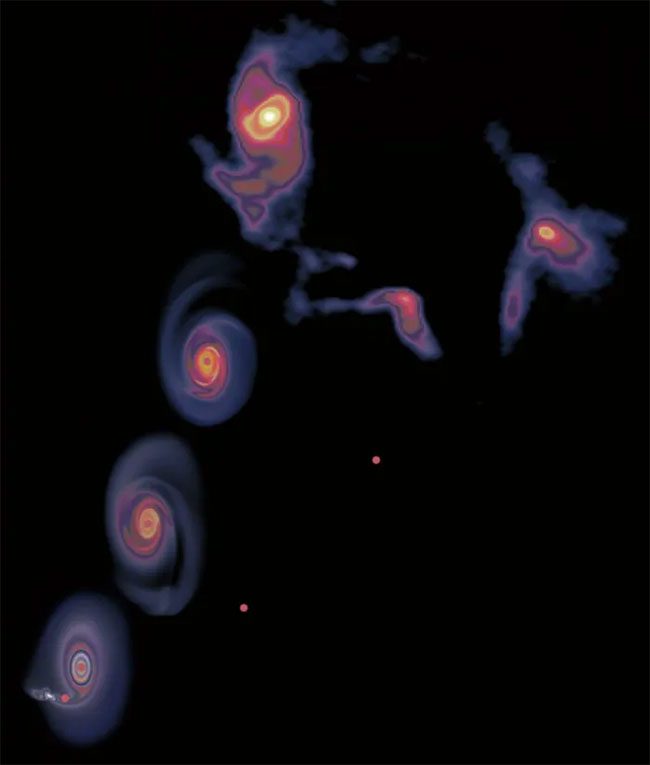Scientists Discover a Strange Star in a Unique Region of the Milky Way
In a new study based on images from the ALMA telescope in Chile, scientists have reported the discovery of a star surrounded by a twisted protoplanetary disk, a type of cosmic material that nourishes stars when they are “young.”
What is unusual is that it appears to resemble a miniature spiral galaxy right within our own galaxy. This star, exhibiting characteristics never observed before, is located very close to Earth, at a distance of 26,000 light-years.

Illustration: Shanghai Astronomical Observatory
Scientists from China, Germany, and the United States aim to use ALMA to survey a region of the Milky Way known as the Central Molecular Zone (CMZ). This area exhibits unusual characteristics compared to its surrounding regions in the rest of the Milky Way. Temperatures in the CMZ vary widely, ranging from nearly 0°F (approximately -17°C – a temperature at which molecules barely move) to several hundred degrees. Stars that might exist here also have very harsh and diverse characteristics, with temperatures much hotter than those of other stars.
As a result, fewer stars of similar size to those found elsewhere in the galaxy exist within the CMZ. This may be why we are discovering such unique and strange stars here.
Nonetheless, stars with protoplanetary disks are quite common in our galaxy. What is peculiar in this case is that the aforementioned star is located very close to Earth. This star is 32 times heavier than our Sun, and its full diameter, considering the extended protoplanetary disk, is 4,000 times the distance from Earth to the Sun.
Another strange point is that this appears to be a twisted star. Scientists are currently seeking answers to how this protoplanetary disk has taken on a twisted shape, as they have identified a relatively nearby celestial object that is three times the size of the Sun, which they believe may have passed through the protoplanetary disk. This passage could have altered the shape of the protoplanetary disk, transforming it into a twisted form over a process that spans thousands of years.
For a long time, scientists have studied and predicted the nature of star formation. The process of dust moving around, gradually accumulating and forming stars, has only been observable with smaller stars, nearly the mass of our Sun. Scientists have wondered whether such dust disks could form larger stars, even those eight times the size of our Sun, or whether large stars could form in this manner. ALMA has addressed this question, and scientists now have evidence that heavier stars, even those up to 30 times the mass of the Sun, can also form in this way.





















































